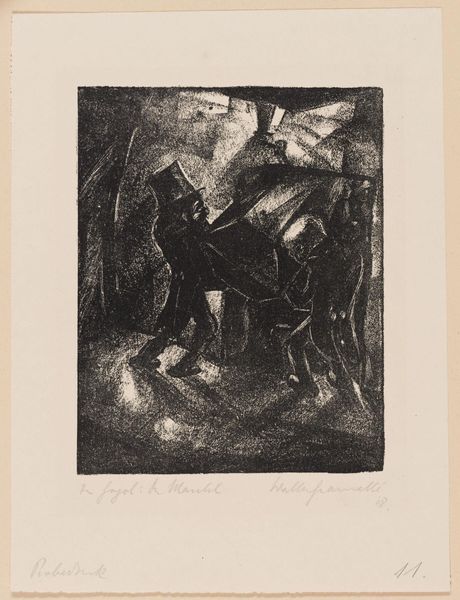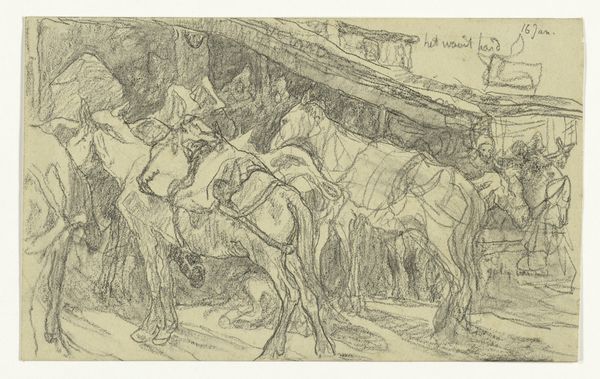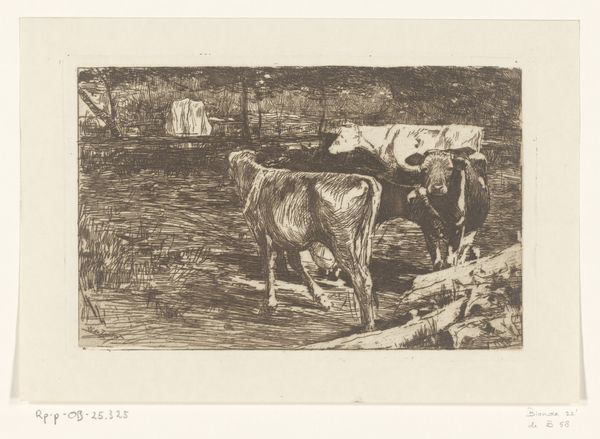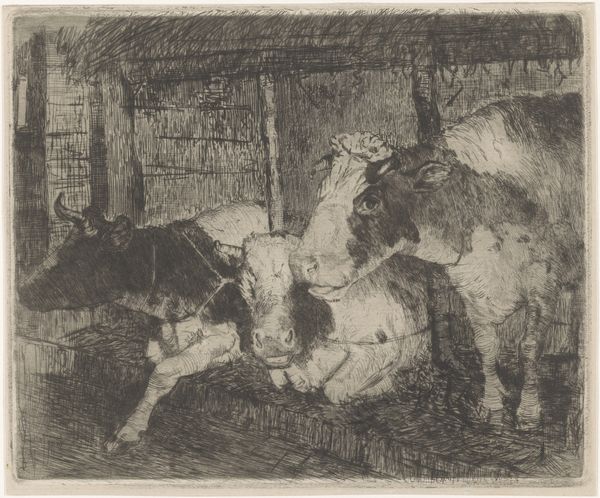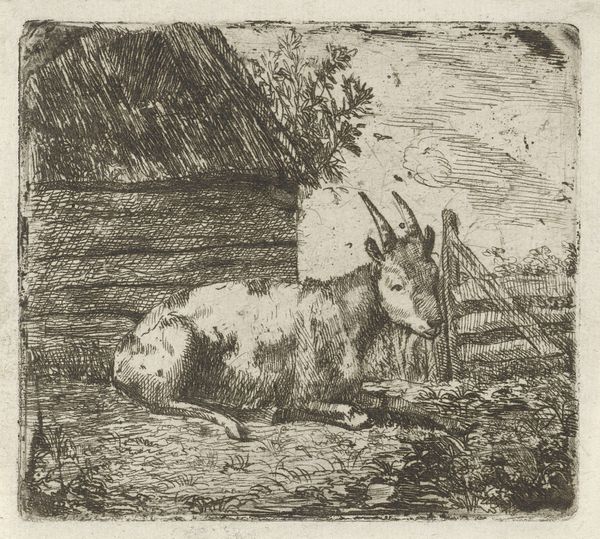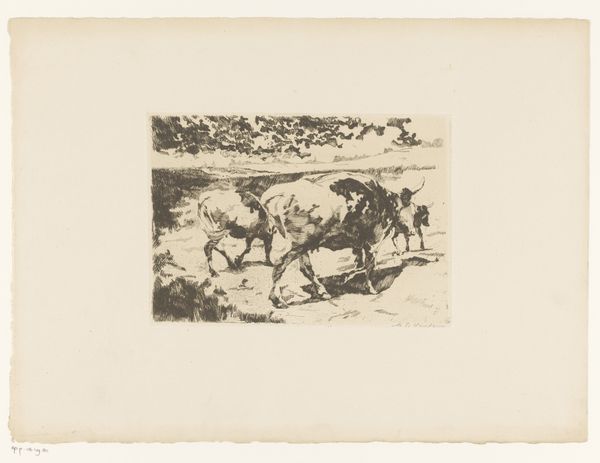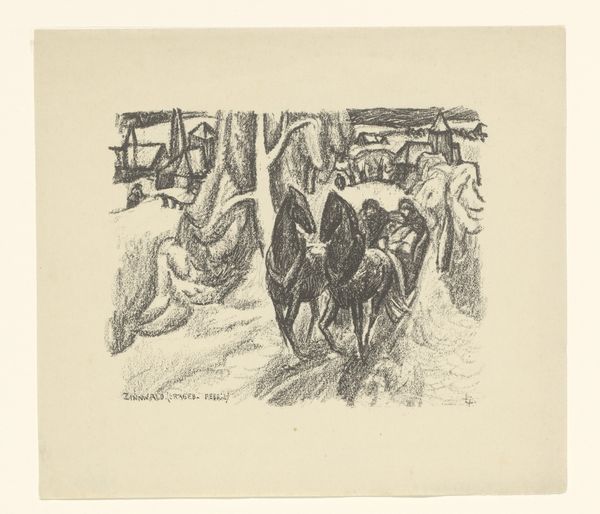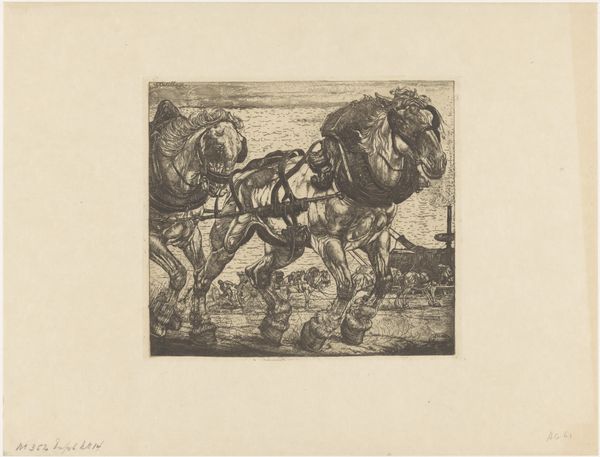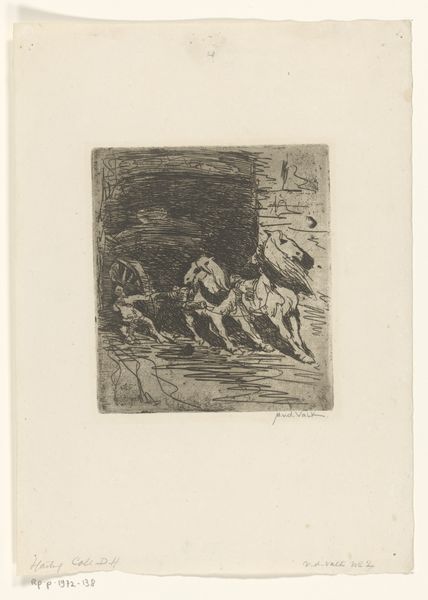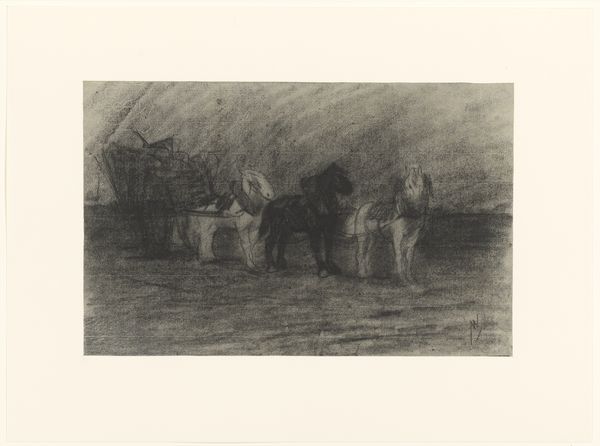
drawing, print, etching, paper
#
drawing
# print
#
etching
#
landscape
#
paper
#
romanticism
#
genre-painting
Dimensions: 111 × 99 mm (image/plate); 132 × 117 mm (sheet)
Copyright: Public Domain
Curator: This is Charles Jacque’s "Stable," an etching created in 1848. Editor: It has this wonderful, almost suffocating intimacy. The low ceiling, the animals crammed together, you can practically smell the hay. Curator: That crowding is beautifully rendered, especially when you consider Jacque’s meticulous use of etching to build up these tonal variations. Look at the rich blacks, the precise, deliberate linework; he coaxes incredible texture out of a simple process. You can feel the heft of the animals. Editor: Absolutely, and I think contextually, this evokes a particular strand of 19th century Romanticism—a fascination with the rural, but filtered through the lens of rapid industrialization and urbanization. There’s a political charge in presenting this vision of a simple life. What statement was Jacque making at this time, displaying this in contrast to the rapid growth and urbanization of Paris at that time? Curator: Yes, you're right; he does portray working animals that helped form rural economic activity, although the choice to create a print brings into the focus the paradox of an increasing population due to an urban lifestyle enjoying genre imagery of the "simple life". Jacque likely drew inspiration from earlier landscape and animal painters, while utilizing a relatively modern process that allows this art to be disseminated among that very class. How do we understand an embrace of older labor and imagery with more available industrial materials, technology, and processes? Editor: Interesting. Considering the rise of agricultural societies and the market for art in that time, maybe Jacque sought to connect with emerging patronage, and perhaps his own personal nostalgic connections? In many ways he participates in creating a narrative that solidifies national romantic notions and identities tied to notions of the land and industry. Curator: His technical skill, the interplay of shadow and light... these serve not only aesthetic ends, but also a political end: highlighting the laborious qualities and value of animals. Editor: True, the piece works as an example of the complex political messaging circulating widely during a turbulent historical context in France, thanks in large part to the relatively low production and distribution cost that facilitated such messaging to larger groups. Curator: Thanks to its affordability, and small production format this piece captures the sentiments of its era in a detailed and widely available way. Editor: A powerful piece, whose impact remains because of both artistic approach and historical context.
Comments
No comments
Be the first to comment and join the conversation on the ultimate creative platform.

